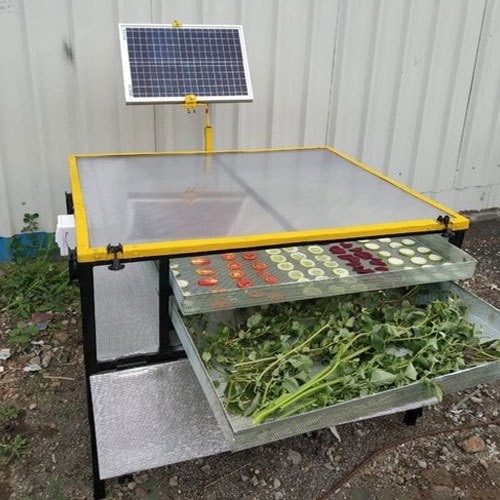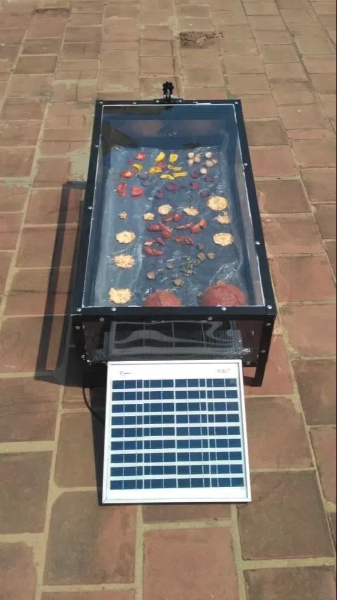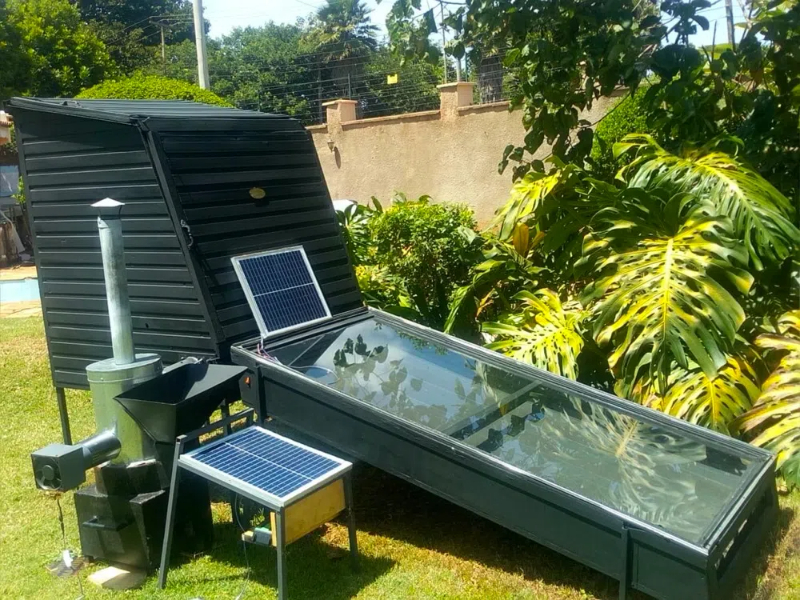
Content Menu
● Introduction to Solar Fruit Dryer Machines
● Understanding the Basics of Solar Fruit Dryers
>> Key Components of a Solar Fruit Dryer
● The Benefits of Using Solar Fruit Dryer Machines
>> Sustainable Fruit Preservation
>> Energy Efficiency
>> Preservation of Nutritional Value
>> Versatility
● Applications of Solar Fruit Dryer Machines
>> Small-Scale and Home Use
>> Commercial and Industrial Applications
>> Off-Grid and Rural Applications
● Types of Solar Fruit Dryer Machines
>> Direct Solar Dryers
>> Indirect Solar Dryers
>> Hybrid Solar Dryers
● Designing an Efficient Solar Fruit Dryer
>> Airflow Management
>> Temperature Control
>> Humidity Regulation
>> UV Protection
● Innovations in Solar Drying Technology
>> Smart Solar Dryers
>> Improved Solar Collectors
>> Energy Storage Solutions
● Economic and Environmental Impact
>> Reduced Post-Harvest Losses
>> Income Generation
>> Carbon Footprint Reduction
● Challenges and Future Prospects
>> Weather Dependence
>> Initial Costs
>> Standardization
● Conclusion
● Frequently Asked Questions
>> 1. What are the main advantages of using a solar fruit dryer machine?
>> 2. Can solar fruit dryers work in cloudy conditions?
>> 3. How long does it take to dry fruits using a solar dryer?
>> 4. Are solar-dried fruits safe to consume?
>> 5. Can I build my own solar fruit dryer at home?
Introduction to Solar Fruit Dryer Machines
In an era where sustainability and energy efficiency are at the forefront of technological innovation, solar fruit dryer machines have emerged as a game-changing solution for food preservation. These ingenious devices harness the power of the sun to dehydrate fruits, vegetables, and other food items, offering an eco-friendly alternative to traditional drying methods. As we delve into the world of solar food dehydrators, we'll explore their benefits, applications, and the impact they're making on both small-scale and commercial food processing operations.
Understanding the Basics of Solar Fruit Dryers
Solar fruit dryer machines, also known as solar food dehydrators, are devices designed to use solar energy to remove moisture from fruits and other food items. This process extends the shelf life of produce while preserving nutrients and flavors. The basic principle behind these machines is simple yet effective: they use the heat from the sun to create a warm, dry environment that gradually removes moisture from food.

Key Components of a Solar Fruit Dryer
1. Solar Collector: This component absorbs solar radiation and converts it into heat.
2. Drying Chamber: Where the fruits or vegetables are placed for dehydration.
3. Air Vents: Allow for proper air circulation to carry away moisture.
4. Trays or Racks: Hold the food items during the drying process.
5. Optional Solar Panel: Some advanced models use photovoltaic panels to power fans for improved air circulation.
The Benefits of Using Solar Fruit Dryer Machines
Sustainable Fruit Preservation
One of the primary advantages of solar fruit dryer machines is their contribution to sustainable fruit preservation. By utilizing renewable solar energy, these devices offer an environmentally friendly method to extend the shelf life of fruits and vegetables. This approach not only reduces reliance on fossil fuels but also minimizes the carbon footprint associated with food preservation.
Energy Efficiency
Solar fruit dryers are highly energy-efficient compared to conventional electric dehydrators. They operate using free, abundant solar energy, which translates to significant cost savings for users. This energy-efficient fruit drying method is particularly beneficial in regions with limited access to electricity or where energy costs are high.
Preservation of Nutritional Value
The gentle drying process employed by solar fruit dryers helps maintain the nutritional content of the food. Unlike high-heat drying methods, solar dehydration preserves vitamins, minerals, and antioxidants more effectively, resulting in healthier dried products.
Versatility
While primarily used for fruits, solar dryers are versatile enough to handle a wide range of food items. From vegetables and herbs to nuts and even some meats, these machines offer a flexible solution for various food preservation needs.

Applications of Solar Fruit Dryer Machines
Small-Scale and Home Use
Solar fruit dryers are ideal for home gardeners and small-scale farmers looking to preserve their harvest. DIY solar fruit dryer projects have gained popularity among enthusiasts who want to create their own sustainable food preservation systems. These homemade units can be constructed using readily available materials and offer an affordable way to dry surplus produce.
Commercial and Industrial Applications
On a larger scale, commercial solar drying systems are revolutionizing the food processing industry. These advanced systems can handle large volumes of produce, making them suitable for agricultural businesses, food manufacturers, and exporters. The use of solar energy in commercial drying operations not only reduces operational costs but also aligns with growing consumer demand for sustainably produced food products.
Off-Grid and Rural Applications
In remote or off-grid areas, solar fruit dryer machines provide a crucial solution for food preservation. These devices operate independently of the electrical grid, making them invaluable in regions with limited infrastructure. By enabling communities to preserve their harvest effectively, solar dryers contribute to food security and economic stability in rural areas.
Types of Solar Fruit Dryer Machines
Direct Solar Dryers
Direct solar dryers expose food items directly to sunlight. They are simple in design and often consist of a transparent enclosure that allows sunlight to penetrate and heat the air inside. While effective, they may require frequent rotation of food items to ensure even drying.
Indirect Solar Dryers
Indirect solar dryers use a separate solar collector to heat air, which is then circulated through the drying chamber. This design offers more control over the drying process and protects food from direct sunlight exposure, which can help preserve color and nutrients.
Hybrid Solar Dryers
Hybrid systems combine solar energy with other heat sources, such as biomass or electric backup. These dryers ensure consistent operation even during cloudy periods or at night, making them suitable for continuous commercial use.
Designing an Efficient Solar Fruit Dryer
Creating an effective solar fruit dryer machine requires careful consideration of several factors:
Airflow Management
Proper airflow is crucial for efficient drying. The design should facilitate natural convection or incorporate fans to ensure consistent air movement through the drying chamber.
Temperature Control
Maintaining optimal drying temperatures is essential to preserve food quality. Advanced designs may include temperature sensors and adjustable vents to regulate heat levels.
Humidity Regulation
Effective moisture removal is key to the drying process. Some designs incorporate dehumidifiers or desiccants to enhance moisture extraction.
UV Protection
To prevent nutrient degradation and color loss, many solar dryers include UV-resistant materials or coatings on transparent surfaces.
Innovations in Solar Drying Technology
The field of solar-powered food processing is continuously evolving, with new innovations enhancing the efficiency and capabilities of solar fruit dryer machines:
Smart Solar Dryers
Integration of IoT (Internet of Things) technology allows for remote monitoring and control of the drying process. Users can track temperature, humidity, and drying progress via smartphone apps.
Improved Solar Collectors
Advanced materials and designs for solar collectors are increasing heat absorption efficiency, leading to faster and more consistent drying.
Energy Storage Solutions
Some modern solar dryers incorporate thermal energy storage systems, allowing for continued operation during cloudy periods or after sunset.
Economic and Environmental Impact
The adoption of solar fruit dryer machines has significant economic and environmental implications:
Reduced Post-Harvest Losses
By providing an effective means of preservation, solar dryers help reduce post-harvest losses, which can be substantial in many developing countries.
Income Generation
For small-scale farmers and entrepreneurs, solar dryers offer opportunities to create value-added products, potentially increasing income and market access.
Carbon Footprint Reduction
The use of renewable solar energy in food processing contributes to reducing greenhouse gas emissions associated with traditional drying methods.
Challenges and Future Prospects
While solar fruit dryer machines offer numerous benefits, there are challenges to overcome:
Weather Dependence
The efficiency of solar dryers can be affected by weather conditions, particularly in regions with frequent cloud cover or limited sunlight.
Initial Costs
Although operating costs are low, the initial investment for commercial-scale solar drying systems can be significant.
Standardization
There is a need for standardized designs and quality control measures to ensure consistent performance across different models and manufacturers.
Despite these challenges, the future of solar fruit dryer machines looks promising. Ongoing research and development are focused on improving efficiency, reducing costs, and expanding applications. As awareness of sustainable technologies grows, solar dryers are likely to play an increasingly important role in global food preservation efforts.
Conclusion
Solar fruit dryer machines represent a confluence of sustainable technology, energy efficiency, and practical food preservation. From small-scale DIY projects to large commercial installations, these devices are transforming how we approach food processing and storage. As we continue to seek eco-friendly solutions to global challenges, solar fruit dryers stand out as a shining example of how renewable energy can be harnessed to meet essential needs while minimizing environmental impact.
By embracing solar drying technology, we not only preserve food more sustainably but also contribute to a more resilient and environmentally conscious food system. As research progresses and adoption increases, solar fruit dryer machines are poised to become an integral part of sustainable agriculture and food processing practices worldwide.

Frequently Asked Questions
1. What are the main advantages of using a solar fruit dryer machine?
Answer: The main advantages include energy efficiency, sustainability, preservation of nutritional value, cost-effectiveness, and versatility in drying various food items.
2. Can solar fruit dryers work in cloudy conditions?
Answer: While solar dryers are most efficient in direct sunlight, many models can still function in partially cloudy conditions, albeit with reduced efficiency. Some advanced systems incorporate backup heat sources for consistent operation.
3. How long does it take to dry fruits using a solar dryer?
Answer: Drying time varies depending on the fruit type, moisture content, and weather conditions. On average, it can take 1-4 days for most fruits, but some may require longer periods.
4. Are solar-dried fruits safe to consume?
Answer: Yes, solar-dried fruits are safe to consume when proper hygiene and food safety practices are followed during the drying process. The low moisture content achieved through solar drying inhibits bacterial growth.
5. Can I build my own solar fruit dryer at home?
Answer: Yes, many DIY enthusiasts build their own solar fruit dryers using readily available materials. There are numerous plans and guides available online for constructing simple yet effective solar dryers for home use.











